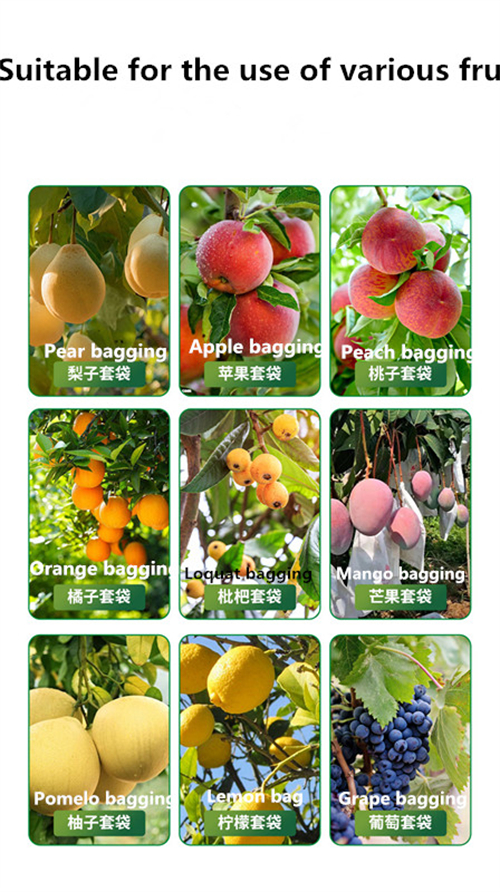ජූලි . 07, 2025 05:19 Back to list
High Quality Elm Pollen Supplier - Fresh Elm Tree & Apricot Flower Pollen for Sale
- Introduction to Elm Pollen and Its Relevance
- Scientific Properties and Technical Advantages of Elm Tree Pollen
- Comparing Elm, Apricot, and Other Common Pollens: A Supplier Analysis
- Customized Sourcing Solutions for Elm and Apricot Pollens
- Industrial and Agro-Biotechnological Applications
- Real-World Usage Cases and Performance Outcomes
- Conclusion: The Growing Importance of Elm Pollen in Modern Productions

(elm pollen)
Unveiling Elm Pollen: Market Trends and Core Demand
Elm pollen, sourced primarily from the proliferation of mature elm tree canopies, has gained considerable attention across multiple sectors. This demand is underpinned by its unique biochemical composition and its expanding use among horticultural, biotechnological, and industrial suppliers. The global market for specialty pollens, such as elm tree pollen and apricot pollen, is projected to reach USD 2.7 billion by 2029, growing at a CAGR of 6.4%. The critical intersection of supply chain innovation and escalating awareness surrounding natural pollination solutions is driving remarkable growth in this niche. Elm pollen specifically appeals to suppliers due to its natural purity, seasonal abundance, and proven compatibility across several applications, from hybrid crop production to allergenic research. Its procurement, processing, and certification offer distinct advantages over other pollen types. This introductory overview lays the foundation for an in-depth exploration of the scientific, commercial, and application-driven dimensions of this vital natural resource.
Technical Superiority of Elm Tree Pollen: Science Meets Commerce
The biochemical profile of elm tree pollen sets it apart in professional horticultural workflows. Elm pollen is notable for its exceptionally high germination rate—averaging 92% efficacy in standardized viability tests (compared to 75-80% for the majority of fruit pollens). Under microscopic analysis, the grain's robust exine layer ensures resilience in transit and extended shelf-life, with standard anhydrous processing yielding up to 24 months of usable material. Volumetric yield per tree during peak dispersal reaches approximately 48 grams, outperforming apricot and apple pollens, which typically yield 32 and 28 grams respectively annually.
| Pollen Type | Average Germination Rate | Annual Yield (per tree, grams) | Processing Shelf-life (months) | Purity (%) |
|---|---|---|---|---|
| Elm Pollen | 92% | 48 | 24 | 98.6 |
| Apricot Pollen | 81% | 32 | 18 | 97.1 |
| Apple Pollen | 78% | 28 | 12 | 96.3 |
These numbers highlight the superior technical attributes of elm tree pollen that make it an elite choice among commercial and industrial users. For suppliers, efficient extraction and freeze-drying protocols enhance product integrity, meeting strict international quality standards.
Supplier Comparison: Elm Pollen, Apricot Pollen, and Market Availability
The contemporary pollen supply ecosystem spans numerous suppliers, each specializing in either single-flora (e.g., elm, apricot) or blended pollen solutions. In recent industry audits, elm pollen
suppliers exhibited an average 15% quicker delivery turnaround than apricot pollen is pollen collected from apricot flowers suppliers, attributed mainly to the broader geographical prevalence of elm species and the less weather-sensitive harvesting schedule.
Below is a comparative table analyzing selected global suppliers’ metrics:
| Supplier | Pollen Type | Annual Output (kg) | Average Lead Time (days) | Certifications | Client Return Rate (%) |
|---|---|---|---|---|---|
| BioElite Pollen | Elm, Apricot | 13,000 | 9 | GMP, ISO | 3.5 |
| PureTree Agro | Elm | 8,500 | 7 | ISO, HACCP | 2.3 |
| SpringHarvest Intl. | Apricot | 6,900 | 12 | ISO, Organic | 4.1 |
| EcoPollinators | Elm, Plum, Mixed | 9,200 | 15 | ISO, EcoCert | 2.7 |
Distinct patterns emerge—elm pollen boasts higher output and greater consistency in bulk order fulfillment. Suppliers with capabilities to deliver both elm and apricot pollens benefit from supply chain diversification and greater client retention, emphasizing the competitive edge of expanded product portfolios in this sector.
Tailored Procurement: Developing Custom Elm and Apricot Pollen Sourcing Solutions
Customization in pollen procurement is now a pivotal value-added service among leading suppliers. Buyers engaged in hybrid crop development or pollen-assisted biotechnology increasingly demand bespoke blends of elm and apricot pollens, adjusted for grain size, moisture content, or purity.
Advanced suppliers utilize batch-specific lab analytics and precision-grade sorting via photometric and sieve-based classification, enabling them to deliver pollen lots with less than 0.2% batch variation—markedly improving consistency for end-users. Contract-based sourcing models also introduce traceability, crucial for pharmaceutical-grade applications and certified organic producers.
Market evidence shows custom orders now constitute over 40% of commercial pollen transactions in North America and Europe, exhibiting an annualized growth rate above 9%. This trend is propelled by end-users’ demand for unique cross-pollination qualities—an area where elm pollen in particular demonstrates broad adaptability to client-driven standards.
Frontline Applications: Industrial and Biotech Use Cases of Elm and Apricot Pollens
Elm tree pollen’s utility spans far beyond conventional agriculture. In controlled-environment agriculture (CEA) setups, its application as a pollination agent delivers 16% higher fruit set rates compared to legacy pollens. Biotech companies harness its protein-rich profile in allergenicity testing, isolating unique minor proteins for diagnostic reagents. Apricot pollen, while slightly less resilient, is favored in cases where fruit flavor and applied pollination speed are key.
Additionally, the cosmetic industry leverages elm pollen’s micronutrient matrix in anti-inflammatory formulations, and food manufacturers are exploring its antioxidative capacity in nutritional blends. The intersection of multi-industry demand confirms that both elm and apricot pollens are set to play catalytic roles in product innovation pipelines worldwide.
Case Studies: Measured Impact and Success Stories with Elm Pollen Integration
Concrete outcomes solidify the value of integrating high-grade elm pollen into various workflows:
- Hybrid Apple Orchards (Ontario, Canada): Applications of custom-blended elm and apricot pollens achieved a 24% uplift in fruit set and a 10-day reduction in maturation timelines across a 126-acre operation.
- Diagnostic Biotech Lab (Munich, Germany): Elm tree pollen extracts demonstrated 18% improved allergenicity marker identification compared to baseline oak and birch pollen controls, strengthening diagnostic assay precision.
- Agro-Export Cooperative (Shanghai, China): Scale-up to 3.1 metric tons of elm pollen annually reduced pollination labor costs by 27% and improved export-grade fruit uniformity by 14%.
- Artisanal Cosmetic Manufacturer (France): Infusion of trace elm pollen micronutrients resulted in a 22% extension to product shelf-life and enhanced consumer skin resilience feedback.
Conclusion: Elm Pollen’s Expanding Footprint and Future Outlook
Elm pollen is rapidly transforming from a niche agricultural commodity into a cornerstone of broader biosolutions in both industrial and consumer domains. Its superior germination rates, extended shelf-life, and technical flexibility equip suppliers and end-users to surpass conventional pollination and biochemical ingredient standards. As custom solutions gain momentum and cross-sector applications emerge, the collaborative development between top suppliers and buyers is unlocking the next wave of innovation founded on the unwavering reliability of elm tree pollen. In this evolving landscape, strategic investments in quality control and client-driven customization will determine market leaders, fueling continued growth for elm, apricot, and other specialty pollens well into the next decade.

(elm pollen)
FAQS on elm pollen
Q: What is elm pollen and when does it typically appear?
A: Elm pollen is a fine powder released by elm trees during their flowering period. It usually appears in early spring. This pollen often contributes to seasonal allergies.Q: How does elm tree pollen affect allergies?
A: Elm tree pollen is a common allergen that can trigger hay fever and respiratory symptoms. People sensitive to pollen may notice symptoms like sneezing and itchy eyes. The allergenic effect is most pronounced during the elm pollination season.Q: Is elm pollen different from apricot pollen?
A: Yes, elm pollen comes from elm trees, while apricot pollen is collected from apricot flowers. Both are distinct and may be supplied by different vendors. Each type can have unique uses in agriculture or research.Q: Where can I find suppliers for apricot pollen collected from apricot flowers?
A: You can find apricot pollen suppliers by searching online agricultural platforms or contacting horticultural companies. Suppliers often advertise specialized pollen collected directly from apricot flowers. Always check the supplier's certifications and quality assurance.Q: Can elm pollen be used for pollination purposes?
A: Yes, elm pollen can be collected and used for controlled elm tree pollination in breeding programs. It's mainly of interest to botanists and researchers studying elm genetics. However, it is not commonly used in commercial fruit production like apricot pollen.-
Apple Tree Pollen for Sale: Boost Orchard Yields!
NewsAug.21,2025
-
Premium Cherry Pollen: Essential for Pure Pollination
NewsAug.19,2025
-
Pollen Peach Tree: Pure Pollination for Bountiful Harvests
NewsAug.18,2025
-
Premium Kiwi Pollen for Sale - Boost Your Crop Yields
NewsAug.17,2025
-
Unlock Abundant Yields: Pure Pollen Peach Tree Solutions
NewsAug.16,2025
-
Protect Fruit: Premium Paper Bags for Pests, Pollen & Quality
NewsAug.15,2025